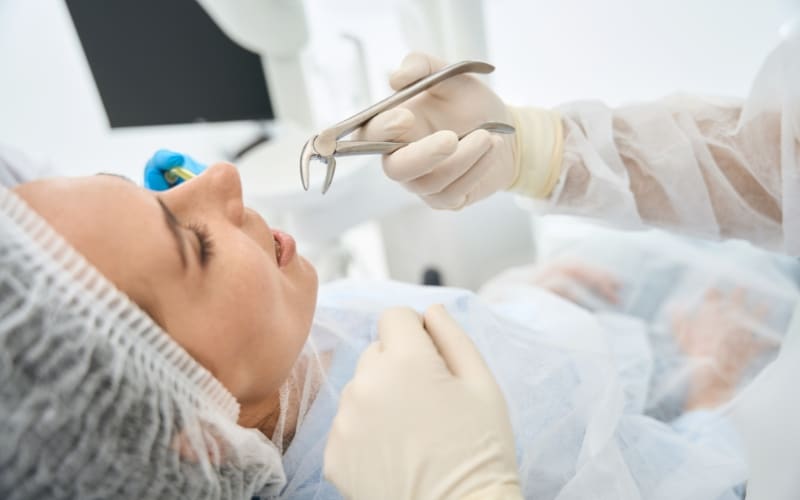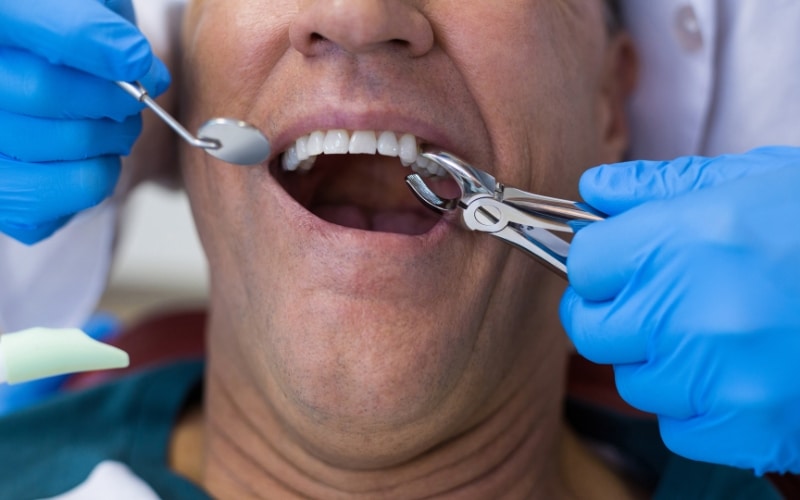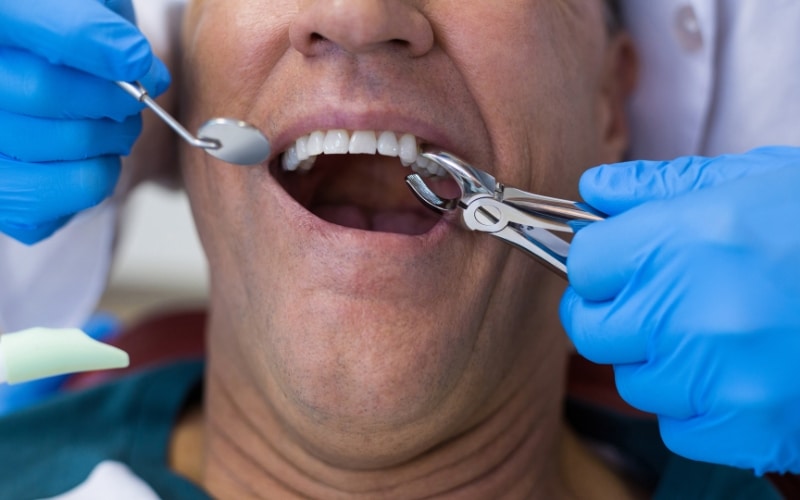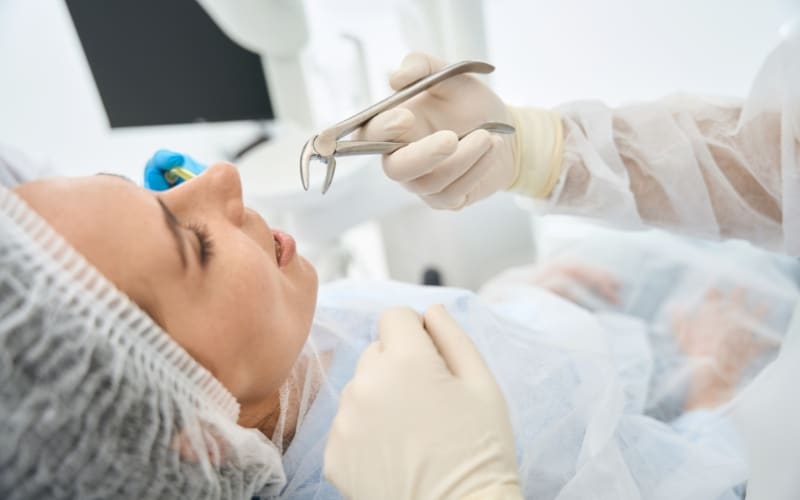New Patients Welcome!

A tooth extraction, while sometimes necessary, can be a disruptive experience. Following your dentist’s post-operative instructions is crucial for a smooth and speedy recovery. But beyond medication and rest, what goes into your mouth plays a significant role in healing. This blog explores the various foods you should avoid after a tooth extraction to ensure a comfortable and complication-free recovery.
The Importance of Food Choice
After a tooth extraction, a blood clot forms in the socket where the tooth was removed. This clot is vital for stopping bleeding and promoting healing. Certain foods can dislodge this delicate clot, leading to a painful condition called dry socket, which delays healing and increases the risk of infection. Additionally, some foods can irritate the extraction site, causing discomfort and hindering the healing process.
Foods to Avoid After Tooth Extraction (and Why)
While the temptation to indulge in your favorite treats might be strong, here are some food categories to avoid during the initial healing phase (typically 3–7 days) after a tooth extraction:
- Hard and Crunchy Foods: These require significant chewing, which can dislodge the blood clot and irritate the extraction site. Examples include nuts, seeds, popcorn, pretzels, raw vegetables (carrots, celery), and hard candy.
- Sticky Foods: Foods that stick to the extraction site can be difficult to remove and harbor bacteria, potentially leading to infection. Examples include caramel, chewing gum, gummy candies, and dried fruits like raisins.
- Spicy Foods: Spicy foods can irritate the sensitive tissues surrounding the extraction site, causing pain and inflammation. Examples include chili peppers, curries, hot sauces, and spicy salsas.
- Acidic Foods: Highly acidic foods can also irritate the extraction site and slow down healing. Examples include citrus fruits (oranges, grapefruits, lemons, and limes), tomatoes, and tomato-based sauces.
- Very Hot or Cold Foods: Extreme temperatures can be uncomfortable for the sensitive extraction site. Let soups, beverages, and other foods cool down to a lukewarm temperature before consuming them.
- Foods Requiring Suction: Avoid using straws for drinking during the initial healing phase. The suction motion can dislodge the blood clot. Opt for sips directly from a cup or glass.
Foods to Eat After Tooth Extraction (and Why)
The key to your post-extraction diet is all about texture. For the first few days (typically 2–3 days), dentists recommend eating soft foods that require minimal chewing. This reduces pressure on the extraction site, allowing the blood clot to form properly and preventing irritation that could lead to infection.
As your healing progresses, you can gradually reintroduce firmer textures. However, it’s crucial to listen to your body and avoid anything that feels uncomfortable. Aim for a complete recovery of 7–10 days before resuming your usual eating habits.
Here’s a delightful list of soft food options to enjoy during your recovery:
- Soups: Cream of mushroom, tomato, or vegetable soups are comforting and packed with nutrients. Remember to let them cool before diving in!
- Smoothies and Milkshakes: Blend fruits, yogurt, or protein powder for a delicious and nutritious drink. This is a great way to sneak in extra vitamins and minerals.
- Mashed Delights: Mashed potatoes, sweet potatoes, avocado, or bananas offer a creamy and filling option. You can add a dollop of plain yogurt or cottage cheese for a protein boost.
- Scrambled Eggs: A classic for a reason, scrambled eggs are a complete protein source that’s easy to digest. Add chopped veggies for extra flavor and nutrients.
- Yogurt and Cottage Cheese: Plain yogurt and cottage cheese are excellent sources of protein and calcium, both crucial for healing. Top them with fruit compote or honey for a touch of sweetness.
- Oatmeal: This fiber-rich breakfast staple is also a great post-extraction option. Opt for quick-cooking oats for a softer texture, and add mashed banana, nuts (after the initial healing phase), or a drizzle of honey.
- Applesauce and Pearsauce: These naturally sweet purees are soothing and require no chewing. Look for unsweetened varieties, and avoid large chunks.
- Soft-cooked or steamed vegetables: Opt for vegetables like carrots, spinach, or green beans, cooked until tender. You can mash them further for an even softer consistency.
- Well-Cooked Pasta and Rice: Opt for softer varieties like macaroni and cheese or well-cooked brown rice. Avoid spicy sauces or acidic ingredients.
Additional Tips for a Smooth Recovery
- Soft is best. Stick to soft foods that are easy to chew and swallow during the first few days following your extraction. Examples include mashed potatoes, applesauce, yogurt, soft-cooked eggs, and smoothies.
- Stay Hydrated. Drink plenty of water to stay hydrated and promote healing.
- Maintain good oral hygiene. Gently brush and floss your teeth as instructed by your dentist, taking care to avoid the extraction site. This helps prevent plaque buildup and infection.
- Rest and avoid strenuous activities. Allow your body time to heal. Avoid strenuous activities that could increase blood pressure and potentially dislodge the blood clot.
This blog provides general guidelines; however, it’s essential to listen to your body and follow your dentist’s specific instructions. Some individuals may experience heightened sensitivity and may need to avoid certain foods for a longer period. If you encounter any discomfort or have questions about your post-extraction diet, do not hesitate to contact your nearest trusted dentist.
As your extraction site heals, you can progressively incorporate a wider range of foods into your diet. Begin with softer options and then slowly reintroduce firmer textures. By adhering to these dietary suggestions and your dentist’s guidance, you can ensure a comfortable and complication-free recovery following your tooth extraction. Remember, exercising patience and being mindful of what you consume can significantly impact your healing process.
In addition to focusing on soft foods, it’s important to be aware of foods to avoid after tooth extraction to prevent complications and promote proper healing.





